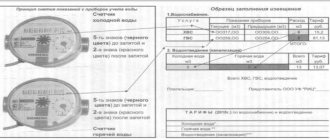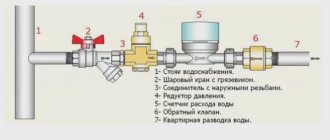How are tariffs determined?
Standards for the consumption of utilities (2017) are calculated according to one important indicator, namely the number of square meters. The social housing area norm is determined per person. The amount of compensation payments for services provided by housing and communal services is also calculated in relation to it. Factors influencing the establishment of this minimum are determined by representatives of the government of the Russian Federation. These indicators include:
- degree of housing provision;
- number of family members;
- type of premises from housing reserves.
An individual approach to each citizen in this matter is of particular importance for society and the economy of the state.
The fact that the establishment of standards is carried out at the state level gives the population guarantees of providing not only housing, but also the opportunity to pay for it on time and in full. The indicator characterizing the size of the required housing area depends on the level of economic development, the housing provision of people and the expansion of the housing stock through the addition of new public facilities.
An all-Russian standard is also provided for this value, according to which one person must have at least eighteen square meters of housing space (for families consisting of three or more members), forty-two for a family of two persons. The social minimum housing area for a single person is thirty-three square meters. If we take into account the average value for the Russian Federation, it will be eighteen square meters.
Calculating tariffs according to standards for housing area is the easiest and least labor-intensive. Special care is only given to special circumstances, such as benefits.
Calculating your heating fee
To save money, consumers install separate meters in their apartments, which allow them to measure the amount of energy consumed without an average calculation according to standards. The devices are installed by specialists and sealed before use.
The number in the payment document depends on the calculation method:
- according to the readings of the apartment meter with the addition of the share of heat energy consumption for heating common areas;
- based on the calculated share for a separate apartment according to the figures from the common building heat meter;
- by calculation using local standards, if there is no general and individual device.
According to the law, the fee is calculated only for the period of actual heating or is spread over the entire year. The option is chosen by the district or city authorities. In the second version, an additional correction factor is applied. In houses with common meters, whose residents pay throughout the year, recalculation is made for the summer months.
With a common house meter
If a high-rise building has a meter, but individual apartments are left without them, Gcal is calculated for heating its own area and the heat costs for heating the common space are added. The values of the device, the area of the house and the square footage of the apartment are taken into account.
The collective meter readings are submitted to the management office, and they are indicated in the next receipt. Information about the general square footage of the house can be found in the housing and communal services in the acceptance documents. The area of the apartment is specified in the technical passport, and tariffs can be found in the heating network.
Consumption is calculated using the formula: P = V x S / S1 x T, where:
- V – amount of energy used according to the control device.
- S – square footage of your own apartment.
- S1 – area of non-residential and residential premises of the building.
- T – legal tariff for heat energy.
The total volume of heat used in the house is divided by square meters of housing. The result is a share for a separate apartment, this value is multiplied by the heating network tariff.
There is no communal appliance, no individual meters
In this case, the current heat consumption standard per 1 sq. m is used. m. The regulated indicator determines the volume of heat to heat a square of housing per month. The climate in the regions of the Russian Federation is different, so local authorities set different quotas in the constituent entities of the Federation. The type of housing and the state of communications in the building matter.
Costs are calculated using the formula: P = S x N x T, where:
- S – area of an apartment or non-residential premises.
- N – consumption rate.
- T – heat tariff.
The area of housing is multiplied by the current norm, and the estimated amount of heat required for heating is determined. Such calculations sometimes do not correspond to actual energy costs. The government obliges residents to install common meters in apartment buildings.
There is a meter and counters
Installing a meter in an apartment allows the owner to pay for the heat actually supplied to the home. The rules provide for mandatory acceptance of readings from individual devices by utility workers if the house has a collective meter and at least 50% of personal premises (by area) are equipped with individual devices.
The fees paid by individual owners are added up. A portion of each is calculated in accordance with instrument readings. The share of consumption among premises equipped with meters is calculated. The resulting value is multiplied by the allocated amount of payment for Gcal for apartments with individual metering and the payment for heat per month is displayed.
The payment amount may be less or more than what has already been paid. This determines whether an additional fee will be charged in the next period or recalculated to a smaller contribution.
Heating consumption standards for 2014
| Municipalities and regions | Thermal energy consumption standard, Gcal/m2 | |||||
| Without taking into account the number of storeys of buildings and the year of construction | Number of floors | 4-5 storey buildings built after 1999 | ||||
| 1 | 2 | 3-4 | 5-9 | |||
| Krasnodar region | 0,0216 | 0,0216 | 0,0216 | 0,0176 | 0,0176 | |
| Ivanovo | 0,015 | |||||
| Samara | 0,018 | |||||
| Yakutsk | 0,0485 | 0,0393 | 0,0358 | 0,0321 | 0,0293 | |
| Vladivostok | from 0.017190 in April to 0.042320 in January | |||||
| Kaliningrad | 0,027 | |||||
| Saint Petersburg | 0,0285 | 0,0226 | ||||
| Moscow | 0,016 | |||||
Interestingly, heating standards in an apartment in Moscow are significantly lower than in Kaliningrad. And the air temperature in the capital in January drops to -6ºС and below, and in the westernmost city of the country - to -2ºС.
How are electricity tariffs determined?
The electricity tariff is the most important standard for utility consumption. Just like water supply, it is divided into two types depending on the method of use.
Individual consumption includes home lighting and the cost of operating small and large household appliances. Public consumption is paid from housing reserves. In some cases, public electricity consumption may include air conditioning, heating and hot water. Using the method of averaging the obtained data, average values of electricity consumption are derived.
What features influence the determination of the need for heating?
The need for heating supply is equal to the product of the specific heat consumption during the year by the social norm for the size of housing. The amount of heat consumption is also affected by the technical and structural characteristics of the building itself (the material from which the structure is made, the number of floors). The formula takes into account climatic and meteorological indicators. Specialists from the relevant organization provide data on ambient temperature, average air temperature during the heating period, and temperature inside buildings.
An important parameter when calculating tariffs is the type of development. If the housing stock is capital, then heating costs will be lower.
Thus, the issue of approving standards for the consumption of utility services is raised in city administrations very often due to constant changes in the components of tariff calculations.
Need a counter
Since 2020, the rate began to increase for those who do not want to use individual accounting, having the technical ability. When inspecting a home, the likelihood of installing the device without repairing or reconstructing engineering systems is determined; compliance of the installation site with the requirements for further recording of indicators; humidity, whether the magnetic field and temperature will affect the operation of the meter.
Based on all of the above, only one thing follows - it is not within the power of an ordinary person to influence the established estimated figures for the services provided. If it is possible to install an individual utility meter, then it is better to install it. This will reduce the monthly payment amount on the receipt several times. And over the course of a year, the difference in payments is obvious.
How is the consumption level set?
The limit within which the standard for the consumption of utilities is established has two expressions: natural and numerical. In addition, the tariff may fluctuate depending on the economic, political and demographic situation in the state. Also, the standards are heterogeneous and are established separately in each region of the Russian Federation. The granting of such rights to local self-government was influenced by the large extent of the country and, as a consequence, different climatic conditions.
The level of use of housing and communal services is also significantly influenced by subjective factors that show the productivity of enterprises. But tariffs are formed only in relation to objective factors. This process is carried out in two stages:
- Establishing standards for individual regions, which, as a rule, are located in the same climatic zone.
- Dividing tariffs into groups, taking into account the characteristics of the area for each locality.








